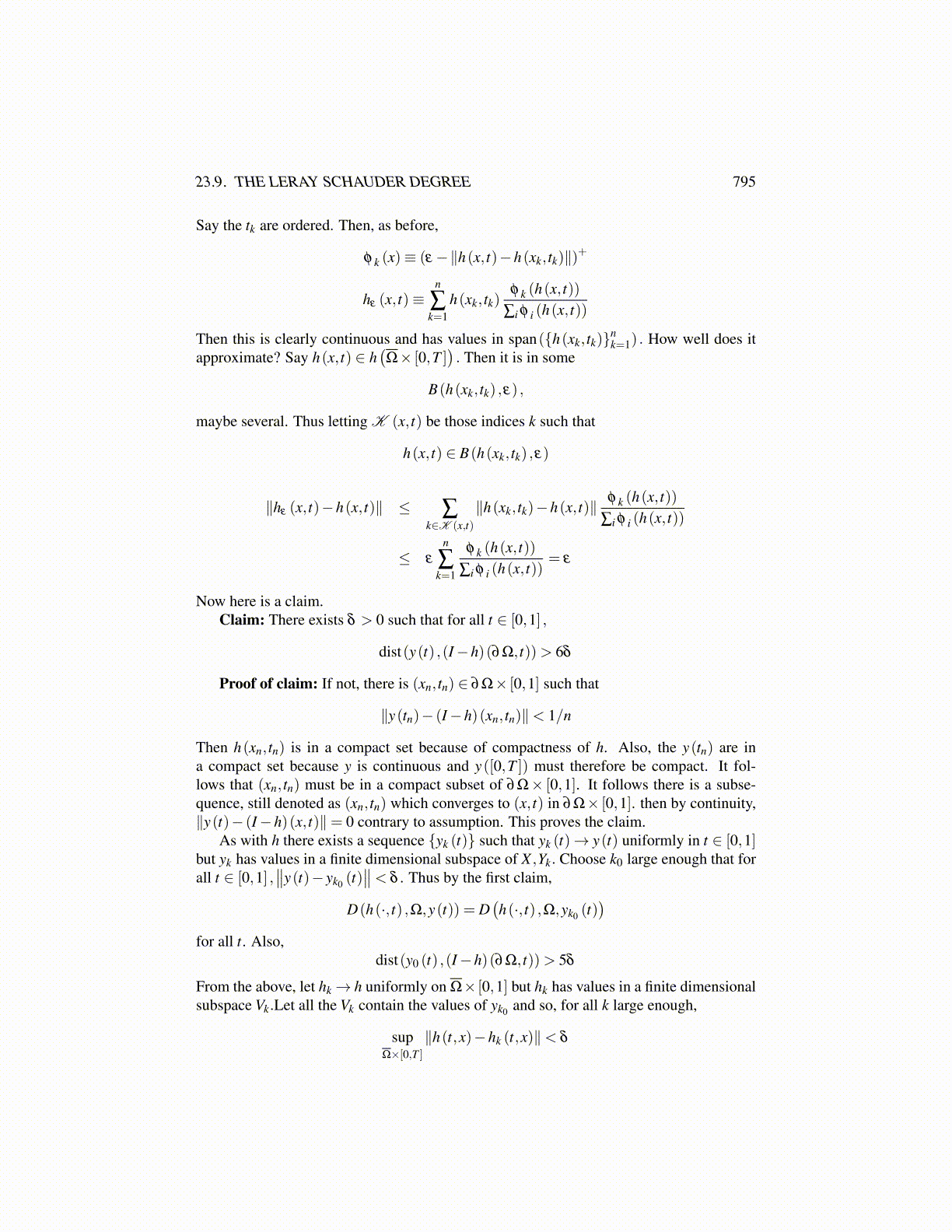
23.9. THE LERAY SCHAUDER DEGREE 795
Hence dist(y,(I−Fk)∂Ω)≥ 5δ while ∥y− z∥< δ . Hence
d((I−Fk) |Vk ,Ω∩Vk,y
)= d
((I−Fk) |Vk ,Ω∩Vk,z
)by Theorem 23.2.2.
From compactness of h, there is an ε net for h(Ω× [0,1]
),{h(xk, tk)} such that
h(Ω× [0,T ]
)⊆ ∪n
k=1B(h(xk, tk) ,ε) .
Say the tk are ordered. Then, as before,
φ k (x)≡ (ε−∥h(x, t)−h(xk, tk)∥)+
hε (x, t)≡n
∑k=1
h(xk, tk)φ k (h(x, t))
∑i φ i (h(x, t))
Then this is clearly continuous and has values in span({h(xk, tk)}nk=1) . How well does it
approximate? Say h(x, t) ∈ h(Ω× [0,T ]
). Then it is in some
B(h(xk, tk) ,ε) ,
maybe several. Thus letting K (x, t) be those indices k such that
h(x, t) ∈ B(h(xk, tk) ,ε)
∥hε (x, t)−h(x, t)∥ ≤ ∑k∈K (x,t)
∥h(xk, tk)−h(x, t)∥ φ k (h(x, t))∑i φ i (h(x, t))
≤ ε
n
∑k=1
φ k (h(x, t))∑i φ i (h(x, t))
= ε
Now here is a claim.Claim: There exists δ > 0 such that for all t ∈ [0,1] ,
dist(y(t) ,(I−h)(∂Ω, t))> 6δ
Proof of claim: If not, there is (xn, tn) ∈ ∂Ω× [0,1] such that
∥y(tn)− (I−h)(xn, tn)∥< 1/n
Then h(xn, tn) is in a compact set because of compactness of h. Also, the y(tn) are ina compact set because y is continuous and y([0,T ]) must therefore be compact. It fol-lows that (xn, tn) must be in a compact subset of ∂Ω× [0,1]. It follows there is a subse-quence, still denoted as (xn, tn) which converges to (x, t) in ∂Ω× [0,1]. then by continuity,∥y(t)− (I−h)(x, t)∥= 0 contrary to assumption. This proves the claim.
As with h there exists a sequence {yk (t)} such that yk (t)→ y(t) uniformly in t ∈ [0,1]but yk has values in a finite dimensional subspace of X ,Yk. Choose k0 large enough that forall t ∈ [0,1] ,
∥∥y(t)− yk0 (t)∥∥< δ . Thus by the first claim,
D(h(·, t) ,Ω,y(t)) = D(h(·, t) ,Ω,yk0 (t)
)